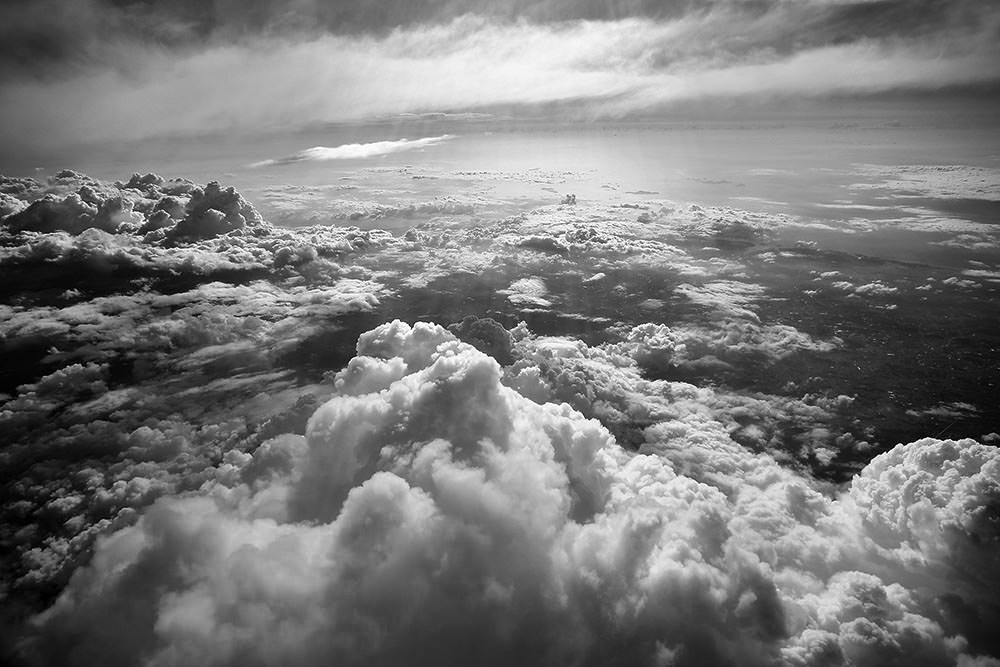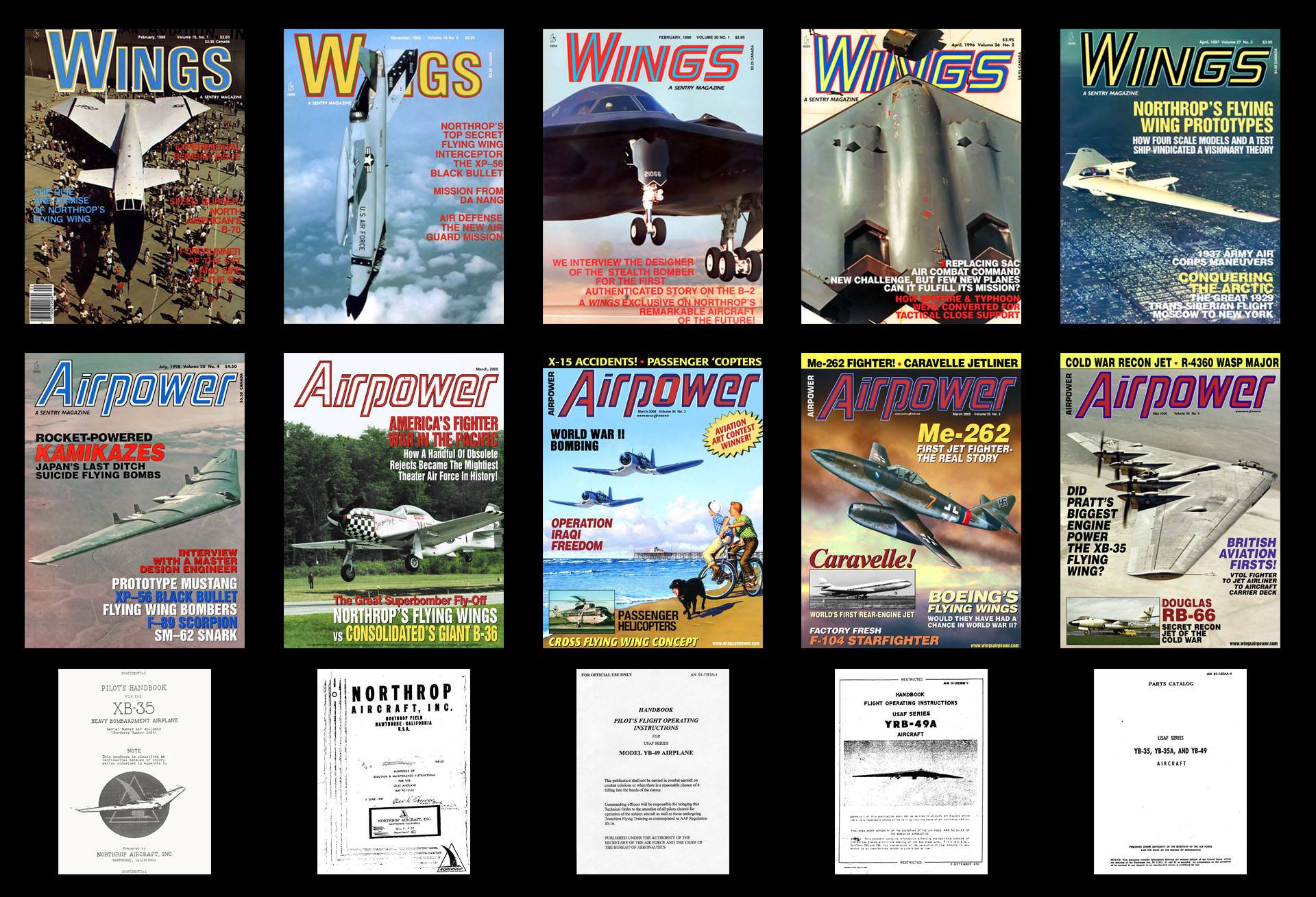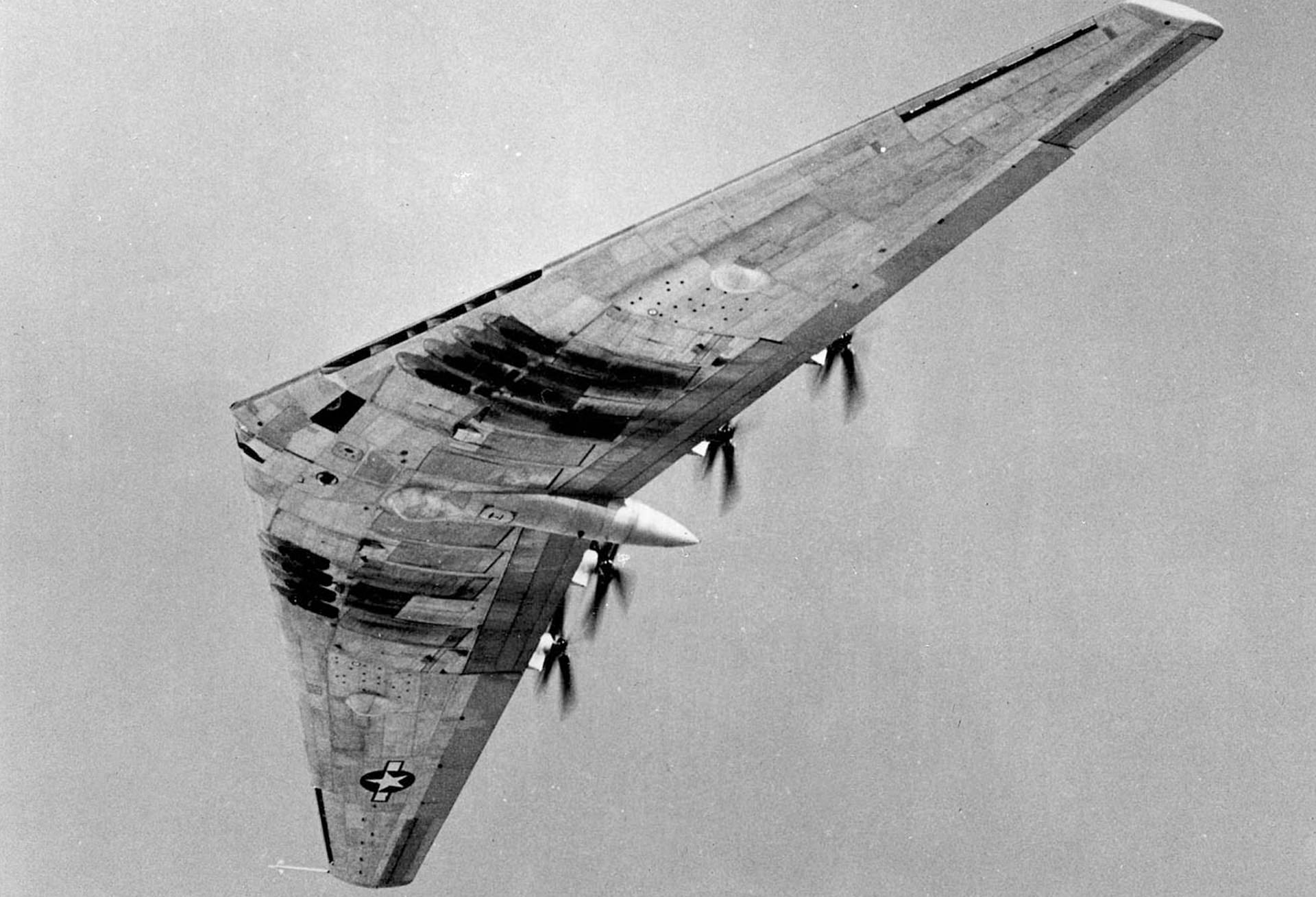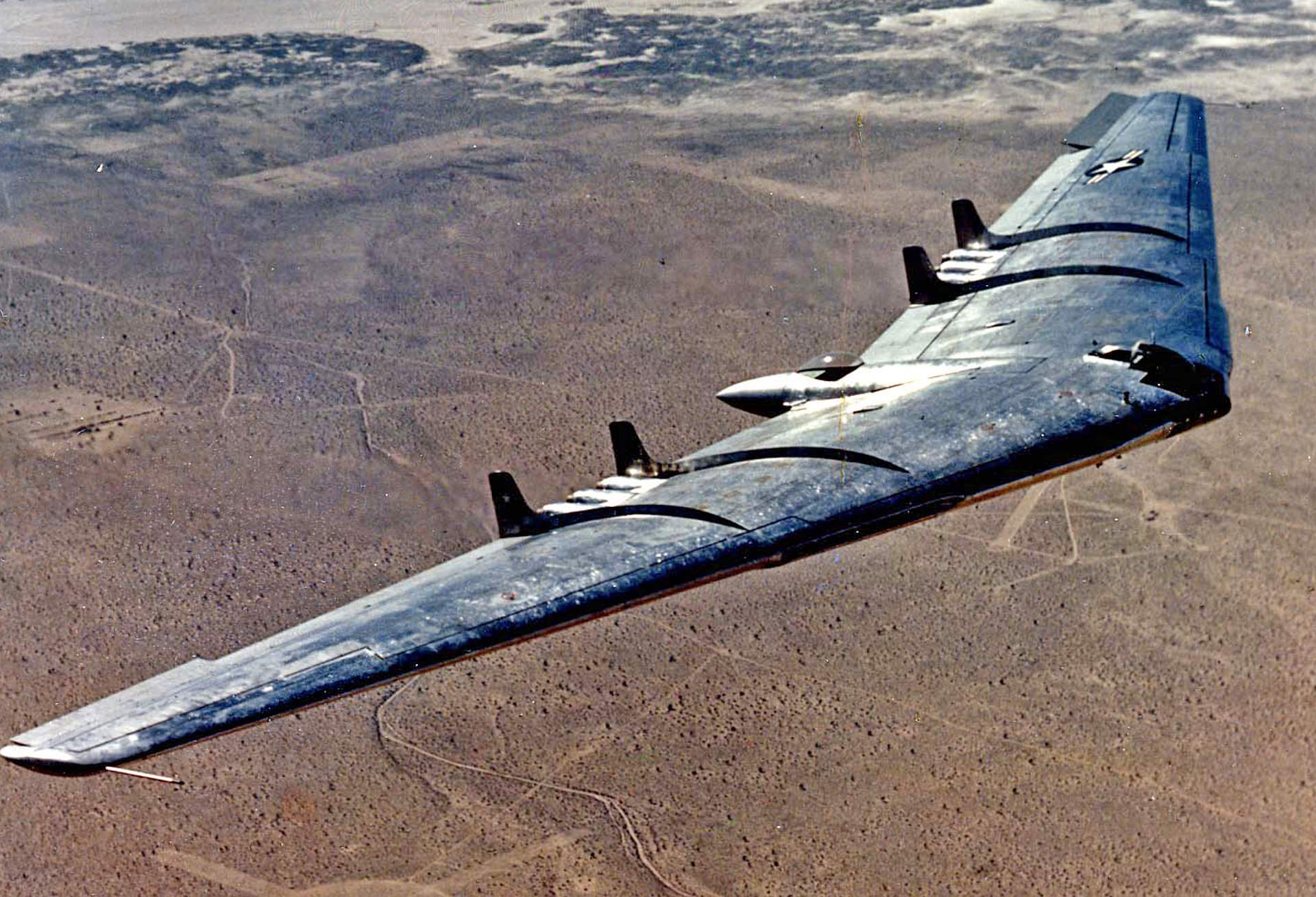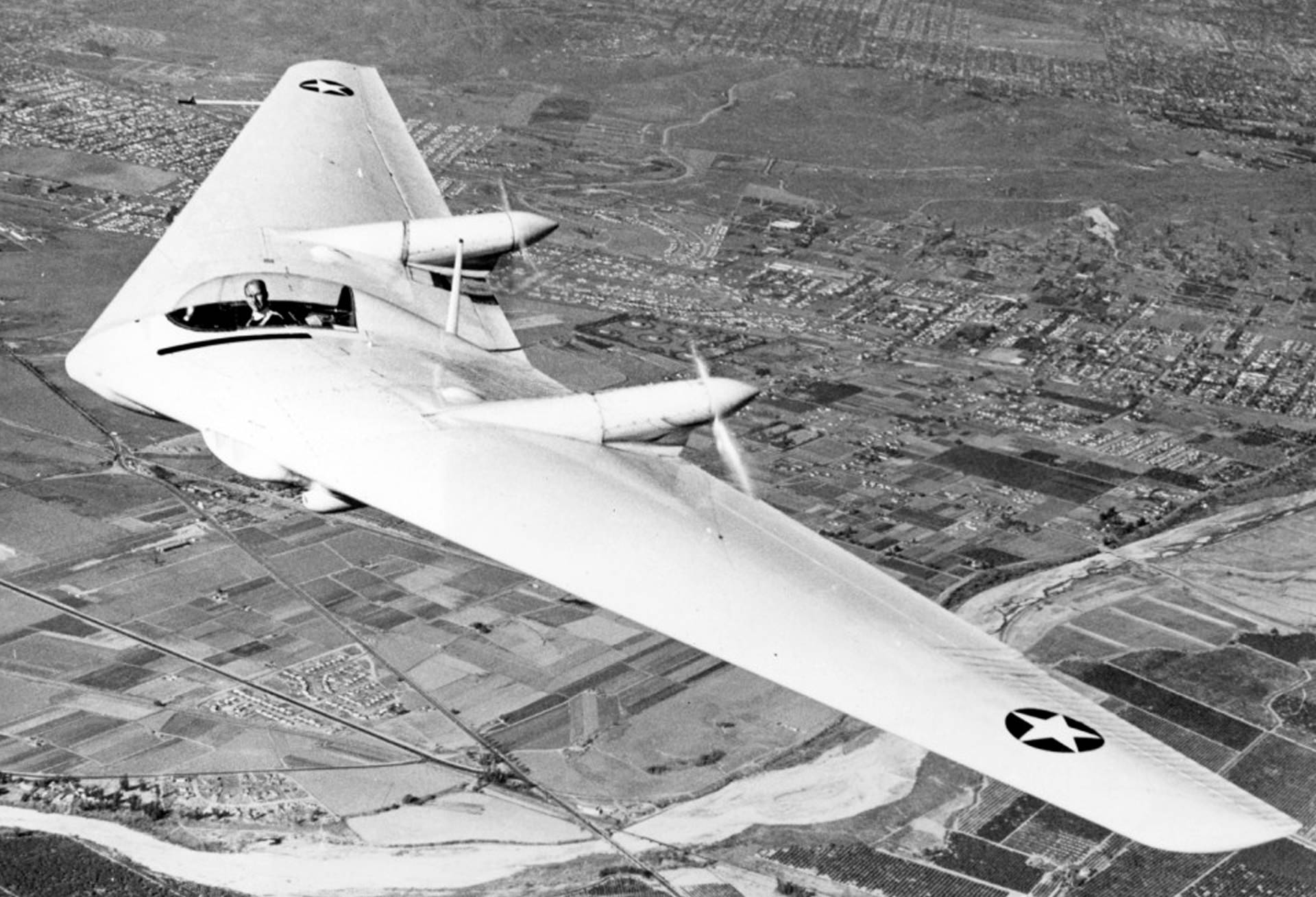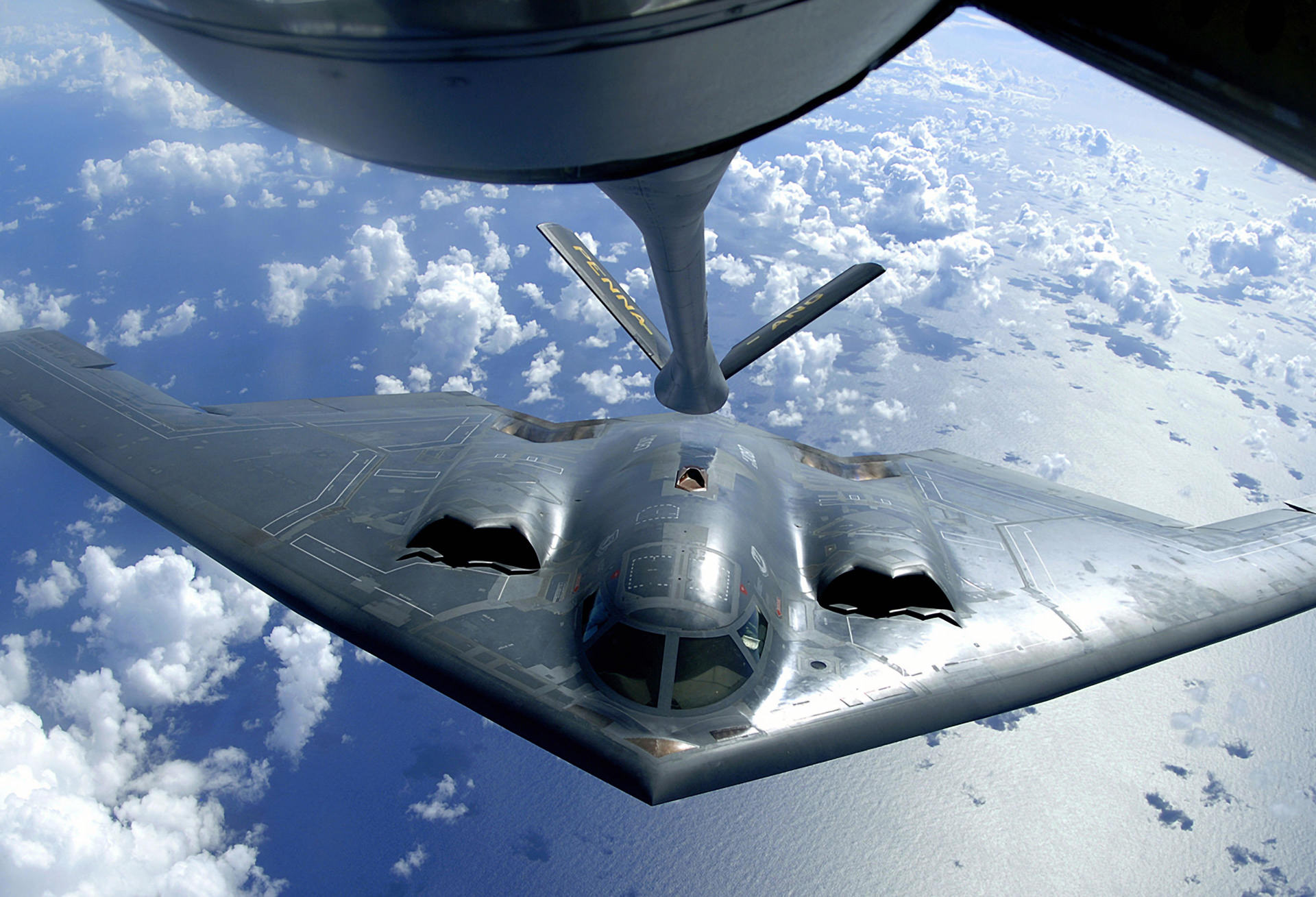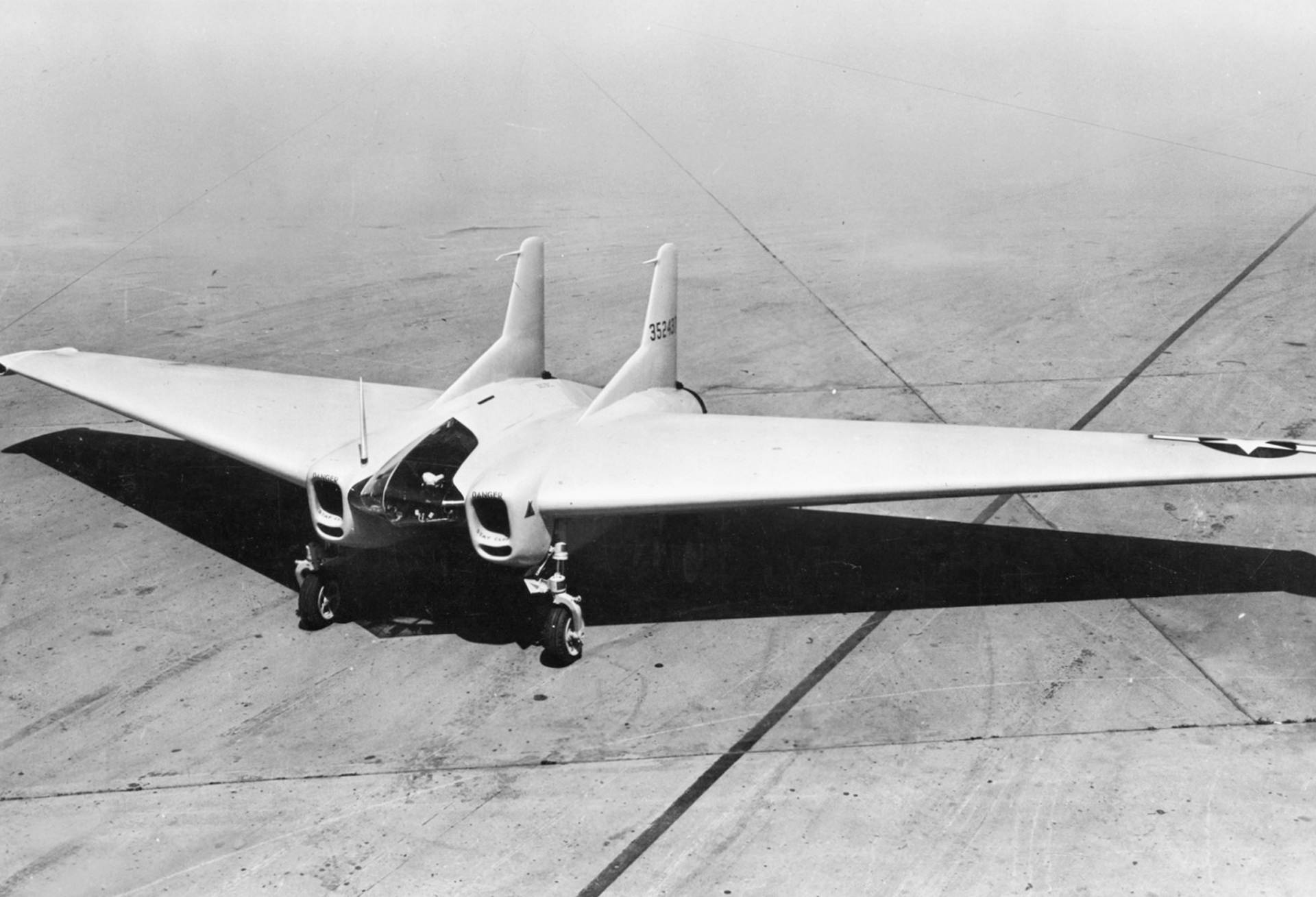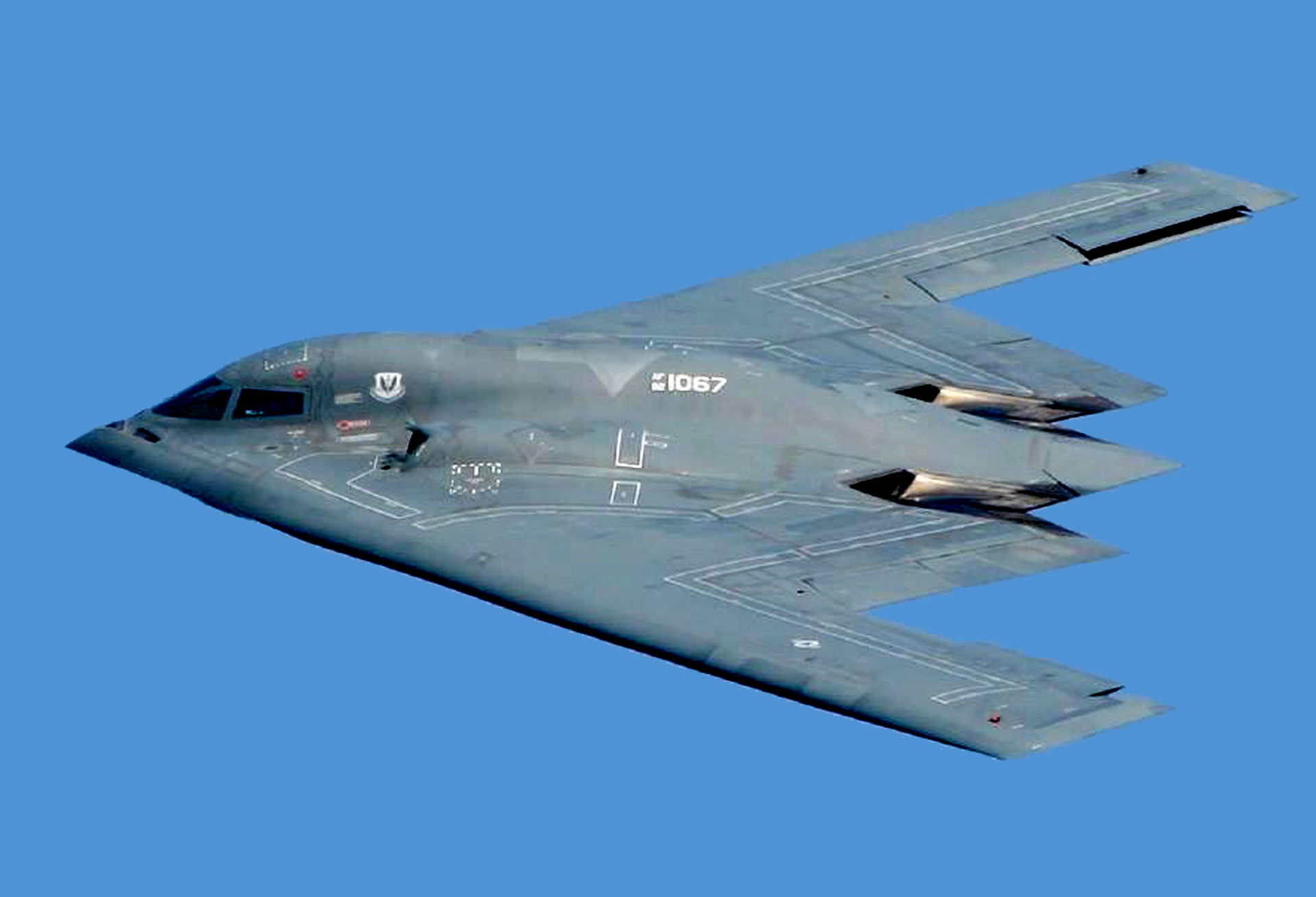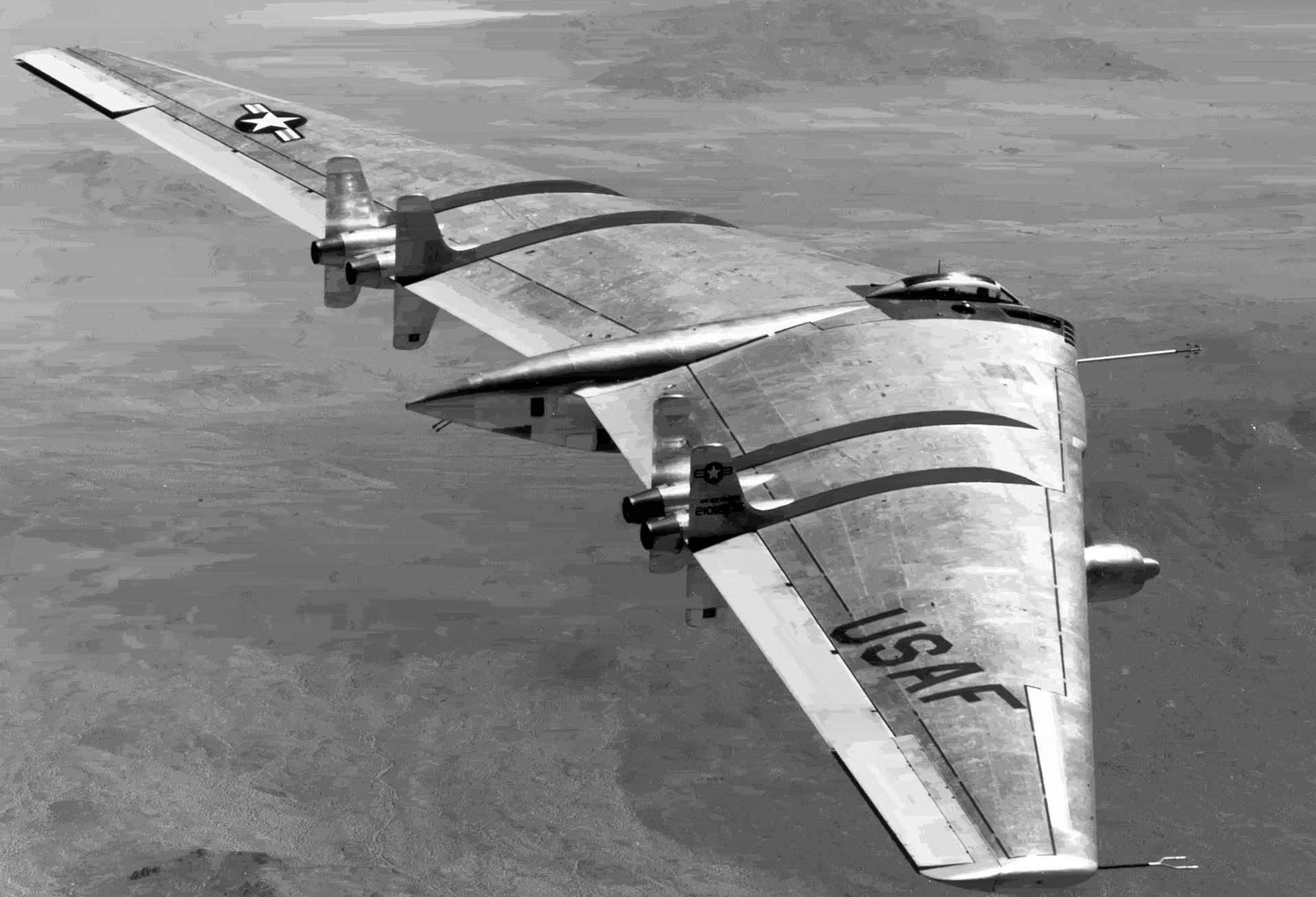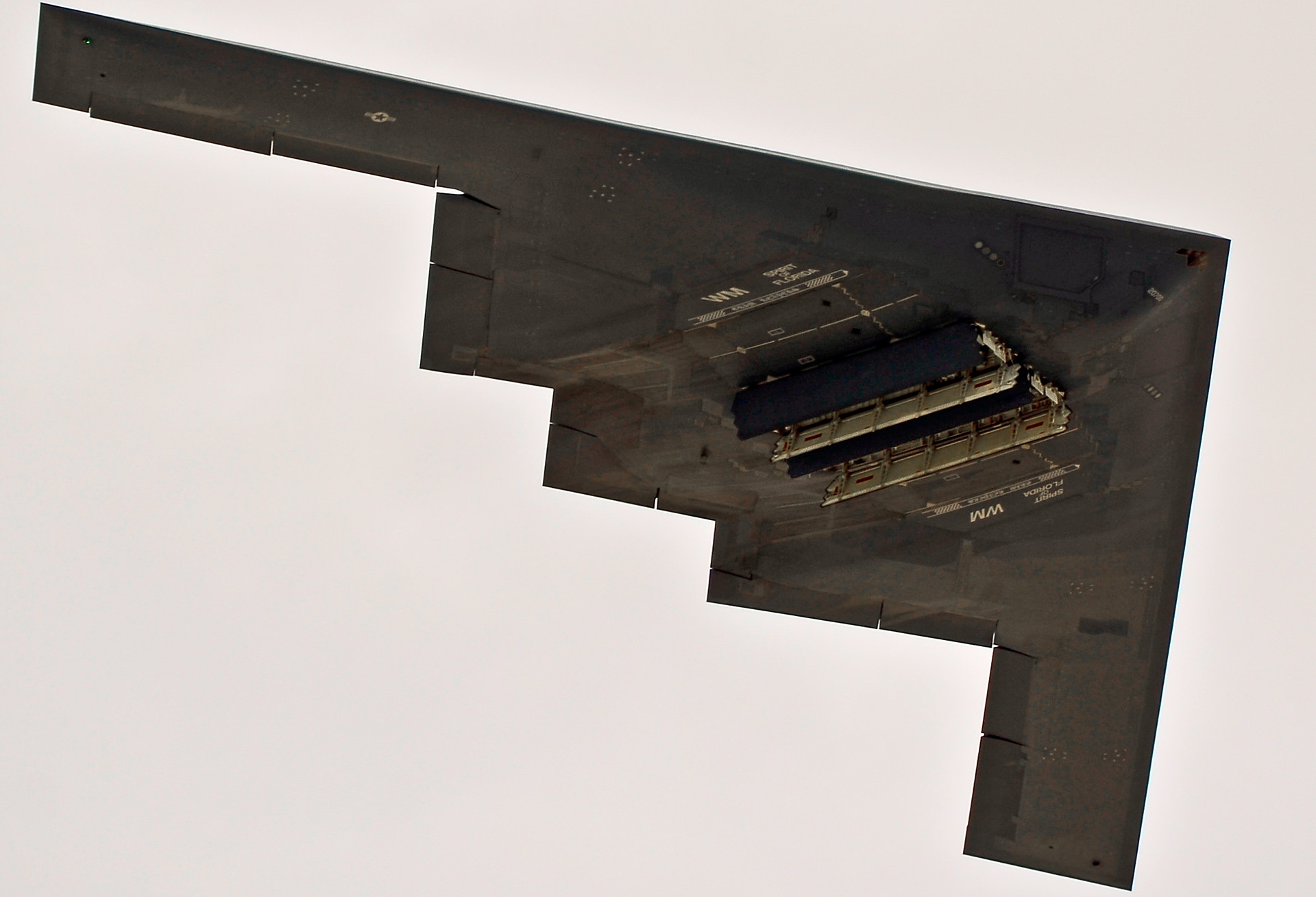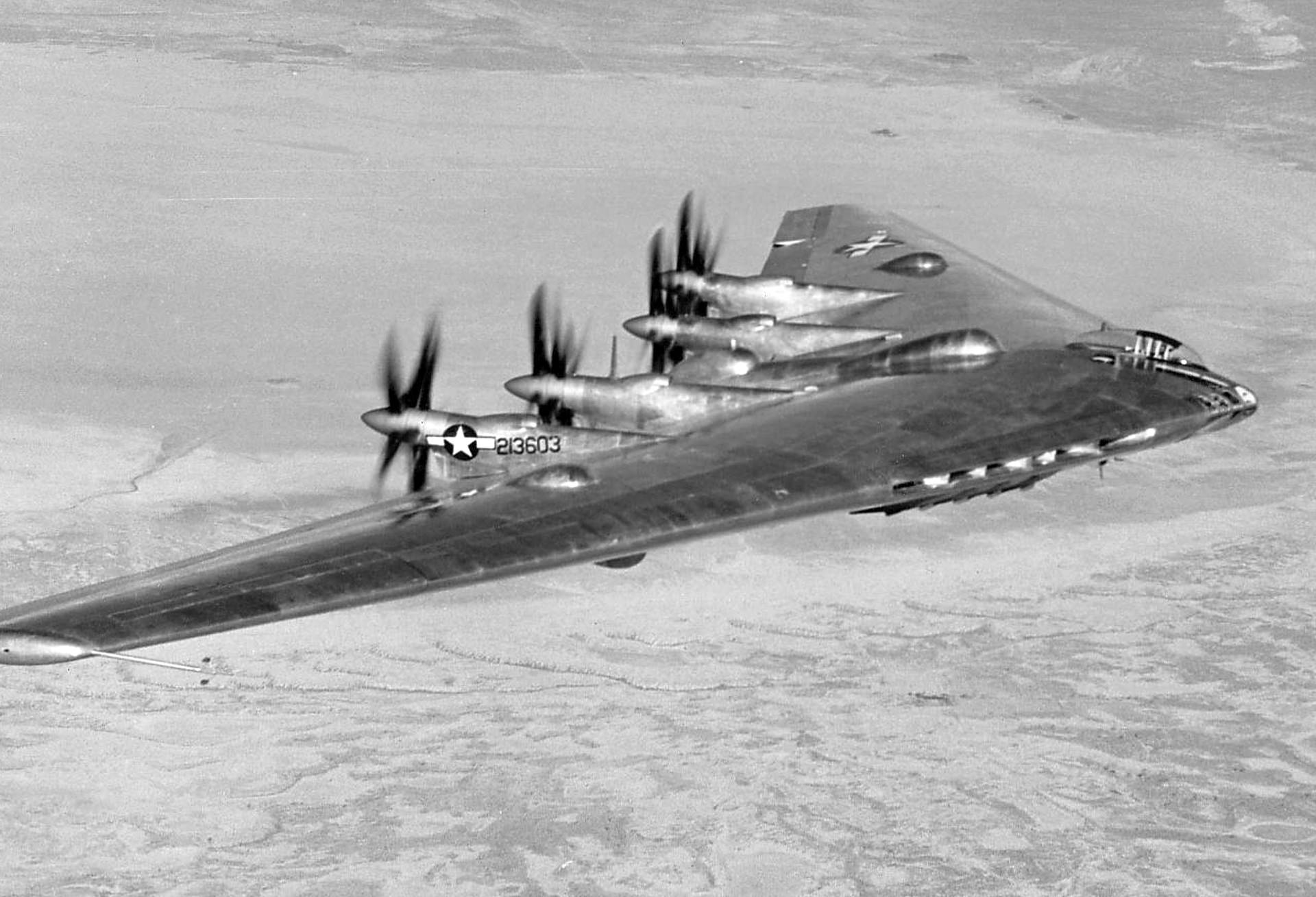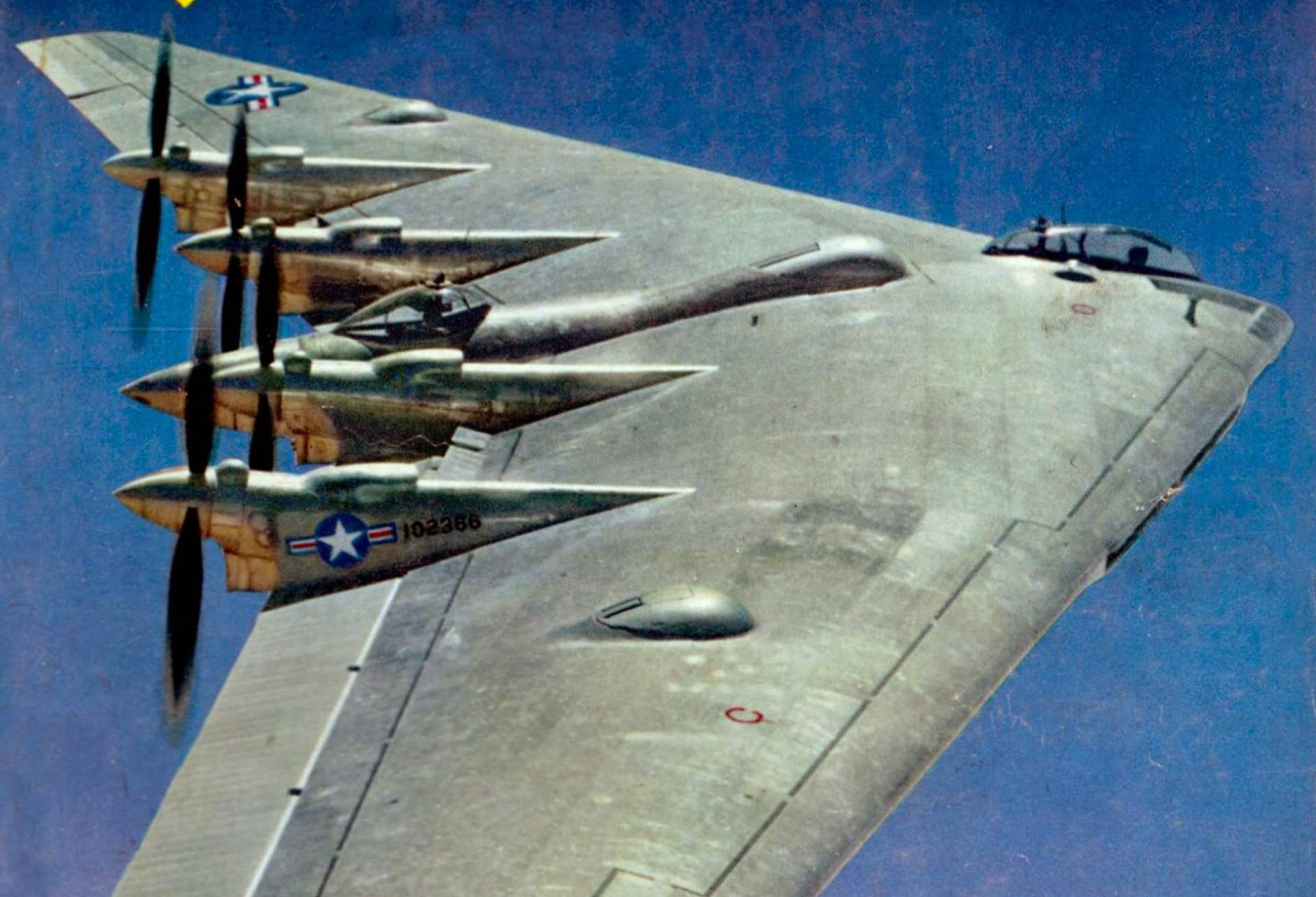Price: $29.95
- 10 magazines, 5 manuals, & photos
- PDF contains 1,846 pages
- Content is keyword searchable
- Print a personal copy
- Pay via PayPal or Credit Card
- International orders welcome!
- Download files upon payment
February 1986
- North American XB-70 Valkyrie
- Northrop’s YB-49 Flying Wing
December 1988
- Northrop’s top secret flying wing interceptor, the XP-56 Black Bullet
- Mission from Da Nang, Vietnam
- Air defense, the new Air Guard mission
February 1990
- Interview the designer of the B-2 Stealth Bomber
April 1996
- Replacing SAC Air Combat Command
- How Spitfire & Typhoon were Converted for Tactical Close Support
April 1997
- Northrop’s Flying Wing Prototypes
- 1937 Army Air Corps Maneuvers
- Conquering the Arctic, the Great 1929 Trans-Siberian Flight
July 1998
- Rocket-powered Kamakazes, Japan’s last ditch suicide flying bombs
- XP-56 Black Bullet, Prototype Mustang
- Flying Wing Bombers
- F-89 Scorpion
- SM-62 Snark
March 2000
- America’s Fighter War in the Pacific
- The Great SuperBomber Fly-Off
March 2004
- World War II Bombing
- X-15 Accidents
- Operation Iraqi Freedom
- Passenger Helicopters
- Cross Flying Wing Concept
March 2005
- Me-262 – First Jet Fighter, the real story
- Boeing’s Flying Wings – Would they have had a chance in World War II?
- Factory Fresh: F-104 Starfighter
- Caravelle! World’s first rear-engine jet
May 2006
- British aviation firsts – VTOL fighters to jet airliner to aircraft carrier deck
- Did Pratt’s biggest engine power the XB-35 flying wing?
- Douglas RB-66 – Secret recon jet of the cold war
- R-4360 WASP major
Manuals & Photos
- XB-35 Pilot’s Handbook
- XB-35 Erection & Maintenance, 1947
- YB-49 Flight Handbook, 1949
- YRB-49A Flight Handbook, 1950
- YB35-YB49 Parts Catalog, 1948
- Over 375 photos of the Northrop X324, MX334, N1M, N9M, XP79, XB-35, YB-49, and B-2 Flying Wings
Northrop Flying Wings
YB-35
YB-49
B-2
N-1M
N-9M
XP-56
XP-79B
Videos
Northrop YB-35
 General Characteristics
General Characteristics
- Crew: 9: pilot, copilot, bombardier, navigator, engineer, radio operator, three gunners
- Length: 53 ft 1 in (16.2 m)
- Wingspan: 172 ft (52.2 m)
- Height: 20 ft 3 in (6.2 m)
- Wing area: 4,000 ft² (371.6 m²)
- Aspect ratio: 7.4
- Fuselage diameter: 9 ft 6 in (2.9 m)
- Empty weight: 89,300 lb (40,590 kg)
- Loaded weight: 180,000 lb (81,647 kg)
- Max. takeoff weight: 209,000 lb (94,802 kg)
- Powerplant: 2 × Pratt & Whitney R-4360-17 and 2× R-4360-21 radial engines, 3,000 hp (2,237 kW) each
Performance
- Maximum speed: 393 mph (632 km/h)
- Range: 8,150 mi (13,100 km)
- Service ceiling: 39,700 ft (12,100 m)
- Rate of climb: 625 ft/min (3.2 m/s)
- Wing loading: 45 lb/ft² (220 kg/m²)
- Power/mass: 0.07 hp/lb (0.11 kW/kg)
Armament
- Guns: 20 × .50 in (12.7 mm) M3 Browning machine guns
- Bombs: 51,070 lb (23,210 kg)
Northrop YB-49
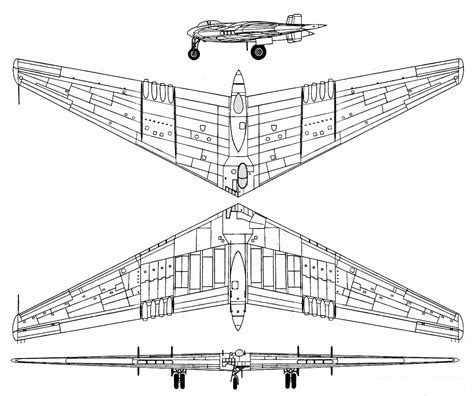 General Characteristics
General Characteristics
- Crew: 6
- Length: 53 ft 1 in (16.18 m)
- Wingspan: 172 ft 0 in (52.43 m)
- Height: 15 ft 2 in (4.6 m)
- Wing area: 4,000 ft² (371.6 m²)
- Airfoil: NACA 65-019 root, NACA 65-018 tip
- Empty weight: 88,442 lb (40,116 kg)
- Loaded weight: 133,569 lb (60,585 kg)
- Max. takeoff weight: 193,938 lb (87,969 kg)
- Aspect ratio: 7.2
- Powerplant: 8 (6 J35-A-19 on the YRB-49A) × Allison J35-A-15 turbojets, 4,000 (5,000 for J35-A-19) lbf (17 kN) each
Performance
- Maximum speed: 493 mph (793 km/h)
- Cruise speed: 365 mph (587 km/h)
- Range: 9,978 mi (16,057 km) maximum[19]
- Combat radius: 1,615 mi (1,403 nmi, 2,599 km) with 10,000 lb bombload
- Service ceiling: 45,700 ft (13,900 m)
- Rate of climb: 3,785 ft/min (19.2 m/s)
- Wing loading: 33 lb/ft² (163 kg/m²)
- Thrust/weight: 0.23
Armament
- Guns: 4 × .50 in (12.7 mm) machine guns (to be mounted in rotating “stinger” tail cone on all production aircraft)
- Bombs: 16,000 lb (7,260 kg) of ordnance
Northrop-Grumman B-2A Block 30 Spirit
 General Characteristics
General Characteristics
- Crew: 2: pilot (left seat) and mission commander (right seat)
- Length: 69 ft (21.0 m)
- Wingspan: 172 ft (52.4 m)
- Height: 17 ft (5.18 m)
- Wing area: 5,140 ft² (478 m²)
- Empty weight: 158,000 lb (71,700 kg)
- Loaded weight: 336,500 lb (152,200 kg)
- Max. takeoff weight: 376,000 lb (170,600 kg)
- Fuel Capacity: 167,000 pounds (75,750 kg)
- Powerplant: 4 × General Electric F118-GE-100 non-afterburning turbofans, 17,300 lbf (77 kN) each
Performance
- Maximum speed: Mach 0.95 (550 knots, 630 mph, 1,010 km/h) at 40,000 ft altitude / Mach 0.95 at sea level
- Cruise speed: Mach 0.85 (487 knots, 560 mph, 900 km/h) at 40,000 ft altitude
- Range: 6,000 nmi (11,100 km (6,900 mi))
- Service ceiling: 50,000 ft (15,200 m)
- Wing loading: 67.3 lb/ft² (329 kg/m²)
- Thrust/weight: 0.205
Armament
- 2 internal bays for ordnance and payload with an official limit of 40,000 lb (18,000 kg); maximum estimated limit is 50,000 lb (23,000 kg).
- 80× 500 lb class bombs (Mk-82, GBU-38) mounted on Bomb Rack Assembly (BRA)
- 36× 750 lb CBU class bombs on BRA
- 16× 2,000 lb class bombs (Mk-84, GBU-31) mounted on Rotary Launcher Assembly (RLA)
- 16× B61 or B83 nuclear bombs on RLA (strategic mission)
- Standoff weapon: AGM-154 Joint Standoff Weapon (JSOW) and AGM-158 Joint Air-to-Surface Standoff Missile (JASSM).
B-2 Aircraft Status
| Air Vehicle No. | Block No. | USAF s/n | Formal name | Time in service, status |
|---|---|---|---|---|
| AV-1 | Test/30 | 82-1066 | Spirit of America | 14 July 2000 – Active |
| AV-2 | Test/30 | 82-1067 | Spirit of Arizona | 4 December 1997 – Active |
| AV-3 | Test/30 | 82-1068 | Spirit of New York | 10 October 1997 – Active |
| AV-4 | Test/30 | 82-1069 | Spirit of Indiana | 22 May 1999 – Active |
| AV-5 | Test/20 | 82-1070 | Spirit of Ohio | 18 July 1997 – Active |
| AV-6 | Test/30 | 82-1071 | Spirit of Mississippi | 23 May 1997 – Active |
| AV-7 | 10 | 88-0328 | Spirit of Texas | 21 August 1994 – Active |
| AV-8 | 10 | 88-0329 | Spirit of Missouri | 31 March 1994 – Active |
| AV-9 | 10 | 88-0330 | Spirit of California | 17 August 1994 – Active |
| AV-10 | 10 | 88-0331 | Spirit of South Carolina | 30 December 1994 – Active |
| AV-11 | 10 | 88-0332 | Spirit of Washington | 29 October 1994 – Severely damaged by fire in February 2010, repaired. |
| AV-12 | 10 | 89-0127 | Spirit of Kansas | 17 February 1995 – 23 February 2008, crashed |
| AV-13 | 10 | 89-0128 | Spirit of Nebraska | 28 June 1995 – Active |
| AV-14 | 10 | 89-0129 | Spirit of Georgia | 14 November 1995 – Active |
| AV-15 | 10 | 90-0040 | Spirit of Alaska | 24 January 1996 – Active |
| AV-16 | 10 | 90-0041 | Spirit of Hawaii | 10 January 1996 – Active |
| AV-17 | 20 | 92-0700 | Spirit of Florida | 3 July 1996 – Active |
| AV-18 | 20 | 93-1085 | Spirit of Oklahoma | 15 May 1996 – Active, Flight Test |
| AV-19 | 20 | 93-1086 | Spirit of Kitty Hawk | 30 August 1996 – Active |
| AV-20 | 30 | 93-1087 | Spirit of Pennsylvania | 5 August 1997 – Active |
| AV-21 | 30 | 93-1088 | Spirit of Louisiana | 10 November 1997 – Active |
| AV-22 through AV-165 | Cancelled | |||
Northrop N-1M
 General Characteristics
General Characteristics
- Crew: one
- Length: 17 ft 11 in (5.46 m)
- Wingspan: 38 ft 8 in (11.79 m)
- Height: 4 ft 11 in (1.50 m)
- Wing area: 350 sq ft (33 m2) (approx)
- Gross weight: 3,900 lb (1,769 kg)
- Powerplant: 2 × Lycoming O-145 four-cylinder horizontally opposed air-cooled piston engines, 65 hp (48 kW) each (original engines)
- Powerplant: 2 × Franklin 6AC-264F2 six-cylinder air-cooled horizontally opposed piston engines, 117 hp (87 kW) each (after reengining)
Performance
- Maximum speed: 200 mph (322 km/h; 174 kn)
- Range: 300 mi (261 nmi; 483 km)
- Service ceiling: 4,000 ft (1,200 m)
Northrop N-9M
General Characteristics
- Crew: 1
- Capacity: 1 observer (N9MB)
- Length: 17 ft 9 in (5.4 m)
- Wingspan: 60 ft 0 in (18.3 m)
- Height: 6 ft 7 in (2 m)
- Wing area: 490 sq ft (45.5 m2)
- Airfoil: NACA 65-019
- Empty weight: 5,893 lb (2,673 kg)
- Gross weight: 13,946 lb (6,326 kg)
- Powerplant: 2 × Menasco C6S-4 “Buccaneer” 6-cyl. supercharged inverted air-cooled in-line piston engine, 275 hp (205 kW) each (N-9MB) 2x Franklin XO-540-7, 300 hp (224 kW) each
Performance
- Maximum speed: 258 mph (415 km/h; 224 kn)
- Range: 500 mi (434 nmi; 805 km)
- Service ceiling: 21,500 ft (6,600 m)
Northrop XP-56 Black Bullet
 General Characteristics
General Characteristics
- Crew: one, pilot
- Length: 27 ft 6 in (8.38 m)
- Wingspan: 42 ft 6 in (12.96 m)
- Height: 11 ft 0 in (3.35 m)
- Wing area: 306 ft² (28.44 m²)
- Empty weight: 8,700 lb (3,955 kg)
- Loaded weight: 11,350 lb (5,159 kg)
- Max. takeoff weight: 12,145 lb (5,520 kg)
- Powerplant: 1 × Pratt & Whitney R-2800-29 radial, 2,000 hp (1,492 kW)
Performance
- Maximum speed: 465 mph at 25,000 ft (749 km/h)
- Range: 660 miles (1,063 km)
- Service ceiling: 33,000 ft (10,061 m)
- Rate of climb: 3,125 ft/min at 15,000 ft (953 m/min)
- Wing loading: 37 lb/ft² (181 kg/m²)
- Power/mass: 0.18 hp/lb (0.96 kW/kg)
Armament
- 2 × 20 mm (.79 in) cannons
- 4 × .50 in (12.7 mm) machine guns
Northrop XP-79B
 General Characteristics
General Characteristics
- Crew: 1
- Length: 13.98 ft (4.26 m)
- Wingspan: 37.99 ft (11.58 m)
- Height: 7.58 ft (2.31 m)
- Wing area: 278 sq ft (25.8 m2)
- Aspect ratio: 5.19
- Airfoil: NACA 66,2-018
- Empty weight: 5,842 lb (2,650 kg)
- Gross weight: 8,669 lb (3,932 kg)
- Fuel capacity: 300 US gal (250 imp gal; 1,100 l)
- Powerplant: 2 × Westinghouse 19B axial flow turbojet, 1,150 lbf (5.1 kN) thrust each
Performance
- Maximum speed: 547 mph (880 km/h; 475 kn)
- Cruise speed: 480 mph (772 km/h; 417 kn)
- Range: 993 mi (863 nmi; 1,598 km)
- Endurance: 2.45 hours
- Service ceiling: 40,000 ft (12,000 m)
- Rate of climb: 4,000 ft/min (20 m/s)
- Wing loading: 31 lb/sq ft (150 kg/m2)
- Thrust/weight: 0.27 lbf/lb (0.0026 kN/kg)
Armament
- Guns: 4x 0.5 in (12.70 mm) machine-guns
Variants
- NS-12 – Northrop company designation for the MX-324 programme.
- NS-14 – Northrop designation for the XP-79 programme.
- MX-324 – The “secret” designation for the powered version of the MX-334 glider. Only used for the no.2 glider, when powered by a single 200 lbf (890 N) Aerojet XCAL-200 liquid-fuelled rocket engine.
- MX-334 – The designation used to describe the pure glider version ( including the no.2 aircraft before it was fitted with the rocket engine).
- MX-365 – The USAAC project number for the XP-79 programme
- XP-79 – The initial design for a rocket powered fighter, to have been powered by 2 x 2,000 lbf (8,900 N) Aerojet XCAL-2000 liquid-fuelled rocket engine.
- XP-79B – Three aircraft were ordered but only one was completed, crashing on its first flight on 12 September 1945.
